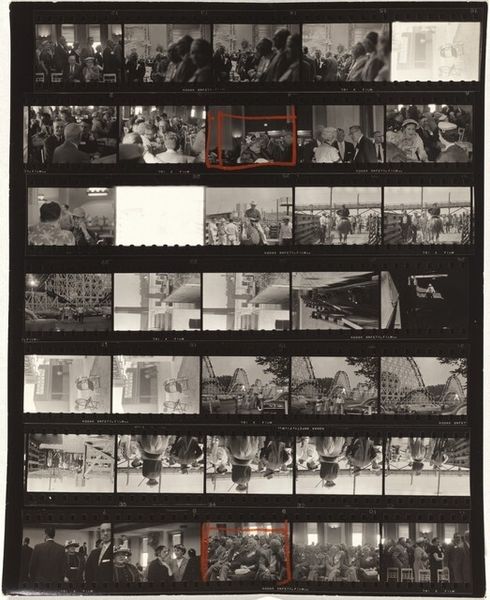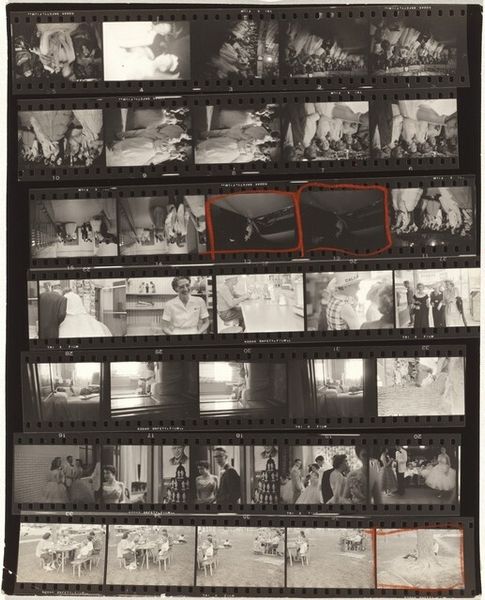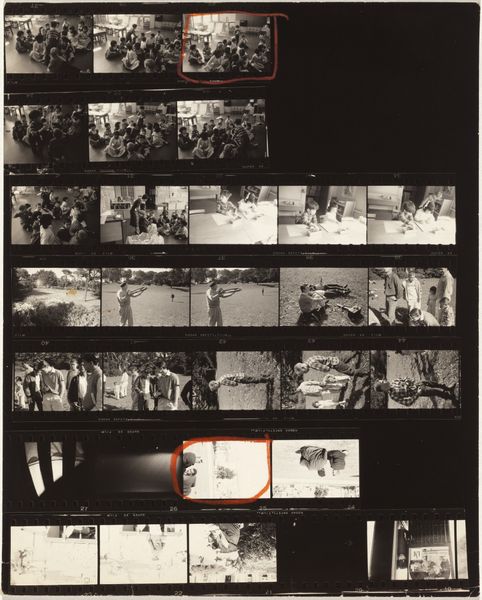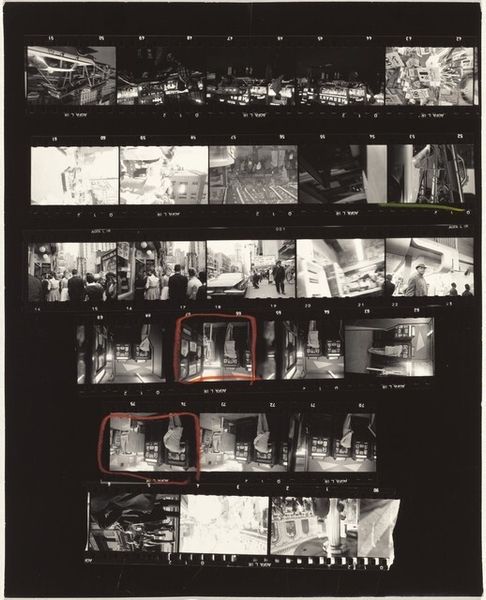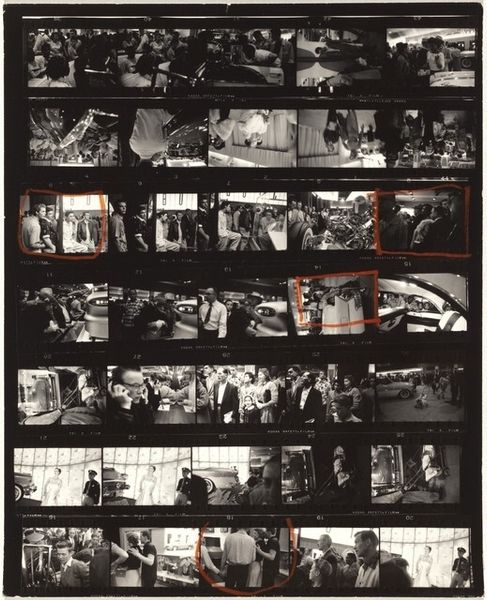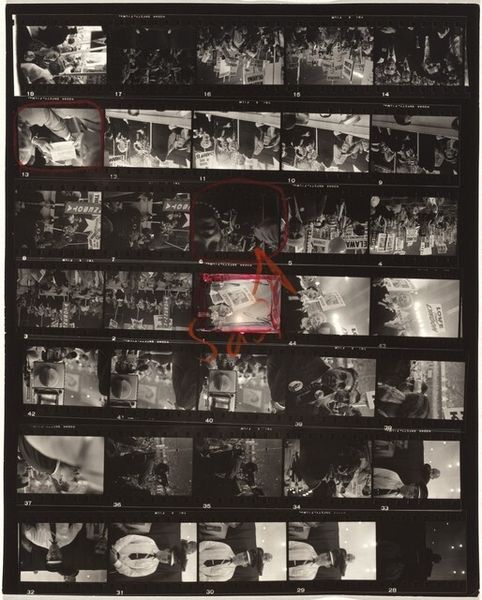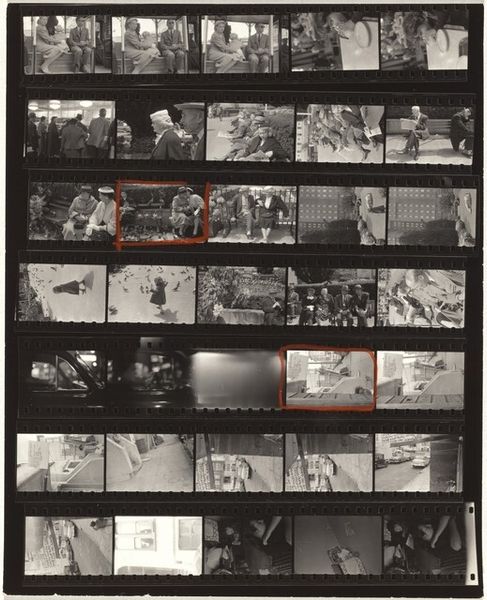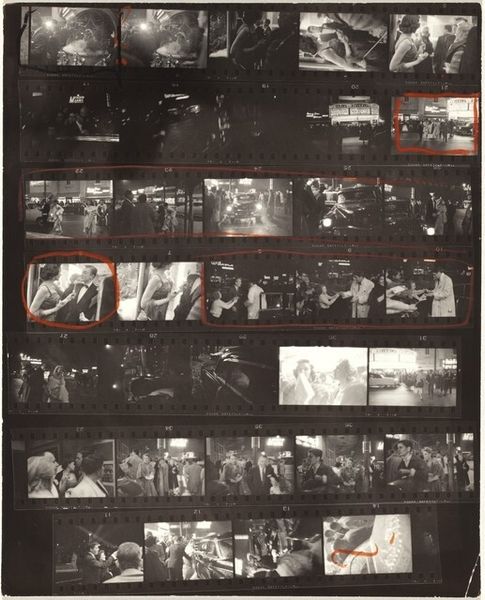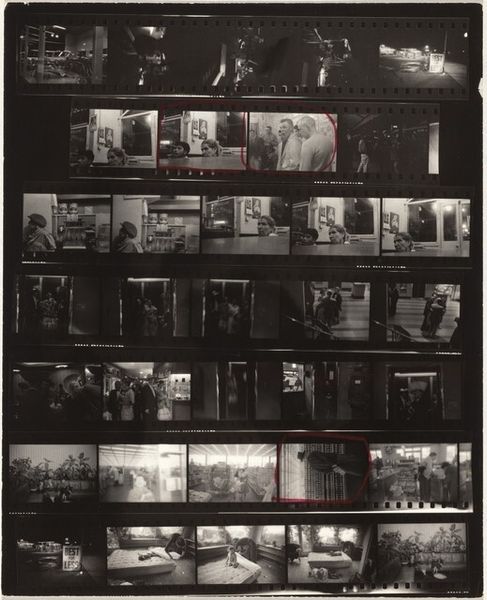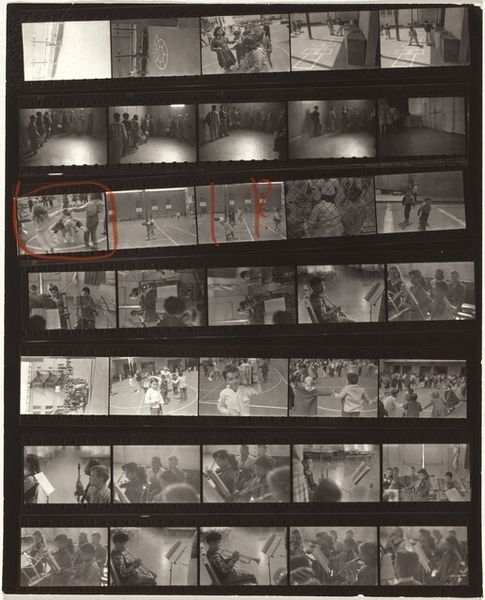
Guggenheim 735--Omaha, Nebraska, Iowa City, and Des Moines, Iowa 1956
0:00
0:00
Dimensions: overall: 25.2 x 20.2 cm (9 15/16 x 7 15/16 in.)
Copyright: National Gallery of Art: CC0 1.0
Curator: Looking at Robert Frank's "Guggenheim 735--Omaha, Nebraska, Iowa City, and Des Moines, Iowa" from 1956, what strikes you first? Editor: The sheer volume of images layered in this gelatin silver print creates a powerful sense of fragmented experience. It looks gritty, real, almost like unedited contact sheets pieced together. Curator: Absolutely. Frank's work consistently challenges idealized visions of America. These photographs disrupt any singular narrative, reflecting the complexities and often harsh realities experienced by various communities. The ordinary elevated, perhaps. Editor: You're right. Focusing on the tangible – the photographic paper, the development process, the gritty contrast – it points to a specific moment of production and reception. It is documenting a journey, both geographical and internal. Consider the means and labour: Frank using his camera as a tool. Curator: His lens dissected 1950s America exposing socio-economic divides through everyday scenes. Notice the repetitive images of gatherings in stark white juxtaposed with shadowed interiors—commenting on consumerism, conformity, and deeply entrenched social stratifications during the post-war era. How did those tensions play into its reception, then? Editor: Reception, no doubt, was polarized, because Frank did not celebrate America without criticality. The physicality of these images communicates truth. Each photographic frame is carefully considered material, and a step further than documentary. We engage through sight to observe themes that are universally impactful across varied socioeconomic classes, creating awareness of the issues at hand through the work. Curator: A crucial awareness. What’s brilliant about this image in particular is the layering, both within the picture frame, but as a historical record too, revealing unspoken societal issues through his stark but poignant street photography, inviting important conversations about national identity and values, even now. Editor: True, his vision transformed how photography engaged with social context and materiality, reminding us of the political potency inherent in documenting daily lives with all of its production. Thanks for expanding that insight.
Comments
No comments
Be the first to comment and join the conversation on the ultimate creative platform.
